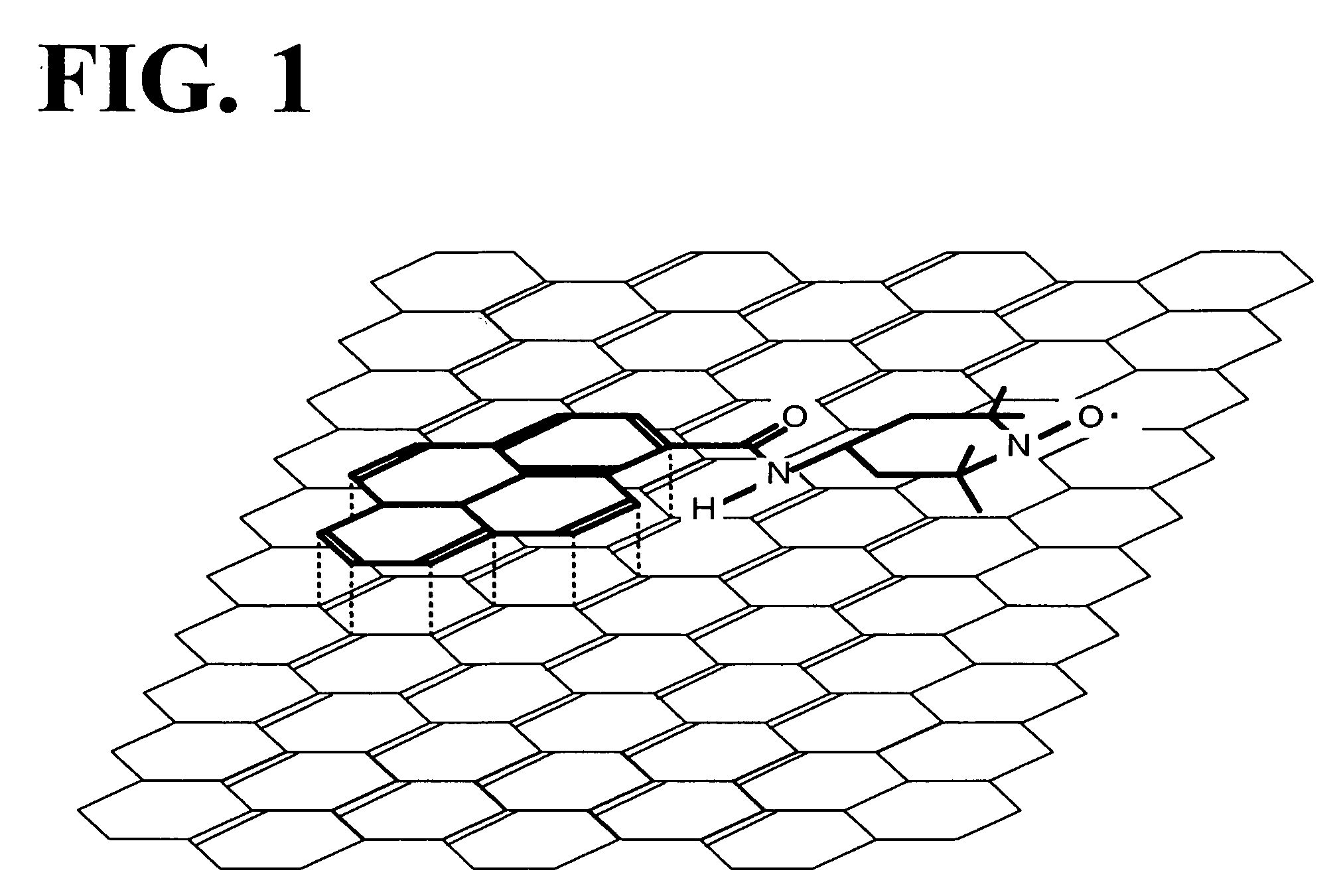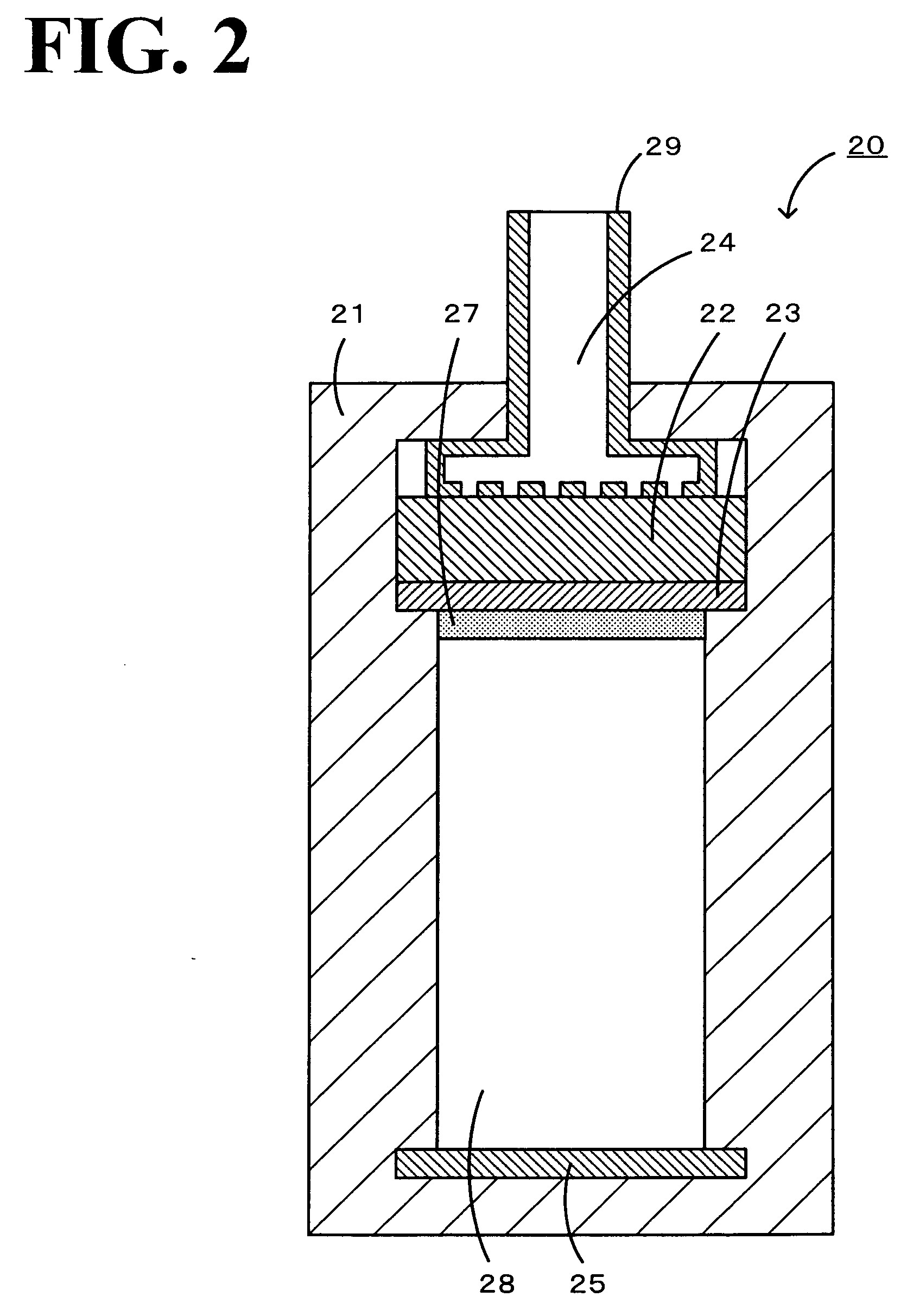Alkali metal air battery
a technology battery, which is applied in the direction of fuel and secondary cells, electrochemical generators, cell components, etc., can solve the problems of disadvantageous low discharge potential and insufficient reduction of charge potential, and achieve the effect of improving the discharge potential, improving the discharge capacity of alkali metal air batteries, and improving the present invention
- Summary
- Abstract
- Description
- Claims
- Application Information
AI Technical Summary
Benefits of technology
Problems solved by technology
Method used
Image
Examples
first embodiment
[0030]In a lithium air battery of the present invention, the negative electrode is capable of occluding and discharging lithium ions. Examples of a material constituting the negative electrode include metallic lithium, lithium alloys, metal oxides, metal sulfides, and carbonaceous materials capable of occluding and discharging lithium ions. Examples of lithium alloys include an alloy of lithium with aluminum, tin, gallium, magnesium, indium or calcium. Examples of metal oxides include tin oxide, silicon oxide, titanium oxide, niobium oxide, and tungsten oxide. Examples of metal sulfides include tin sulfide and titanium sulfide. Examples of carbonaceous materials capable of occluding and discharging lithium ions include graphite, coke, mesophase pitch-based carbon fiber, spherical carbon, and carbon obtained by baking a resin.
[0031]In the lithium air battery of the present invention, the positive electrode uses oxygen as a positive-electrode active material and contains a compound se...
second embodiment
[0043]A lithium air battery according to a second embodiment of the present invention includes a negative electrode containing a negative-electrode active material, a positive electrode using oxygen as a positive-electrode active material, and a nonaqueous ion-conducting medium arranged between the negative electrode and the positive electrode and containing a compound having a stable radical skeleton, the compound serving as a redox catalyst for oxygen. In the lithium air battery according to the second embodiment, the positive electrode need not contain the redox catalyst because the ion-conducting medium contains the redox catalyst. In the lithium air battery according to the second embodiment, the negative electrode (negative-electrode active material), the positive electrode (e.g., the positive-electrode active material, the conductive material, the binder, and the current collector), the separator, the nonaqueous ion-conducting medium (the supporting electrolyte and the nonaqu...
third embodiment
[0048]A lithium air battery according to a third embodiment of the present invention includes a negative electrode containing a negative-electrode active material, a positive electrode using oxygen as a positive-electrode active material and containing a redox catalyst for oxygen, and a nonaqueous ion-conducting medium arranged between the negative electrode and the positive electrode and containing a compound having a structure including a stable radical skeleton. In the lithium air battery according to the third embodiment, the positive electrode contains the redox catalyst and the compound having a structure including a stable radical skeleton functioning as a redox catalyst for oxygen. In this case, the redox catalyst in the positive electrode may contain a compound having a structure including a stable radical skeleton. In the lithium air battery according to the third embodiment, the negative electrode (negative-electrode active material), the positive electrode (e.g., the pos...
PUM
| Property | Measurement | Unit |
|---|---|---|
| time | aaaaa | aaaaa |
| thickness | aaaaa | aaaaa |
| volume | aaaaa | aaaaa |
Abstract
Description
Claims
Application Information
 Login to View More
Login to View More - R&D
- Intellectual Property
- Life Sciences
- Materials
- Tech Scout
- Unparalleled Data Quality
- Higher Quality Content
- 60% Fewer Hallucinations
Browse by: Latest US Patents, China's latest patents, Technical Efficacy Thesaurus, Application Domain, Technology Topic, Popular Technical Reports.
© 2025 PatSnap. All rights reserved.Legal|Privacy policy|Modern Slavery Act Transparency Statement|Sitemap|About US| Contact US: help@patsnap.com



